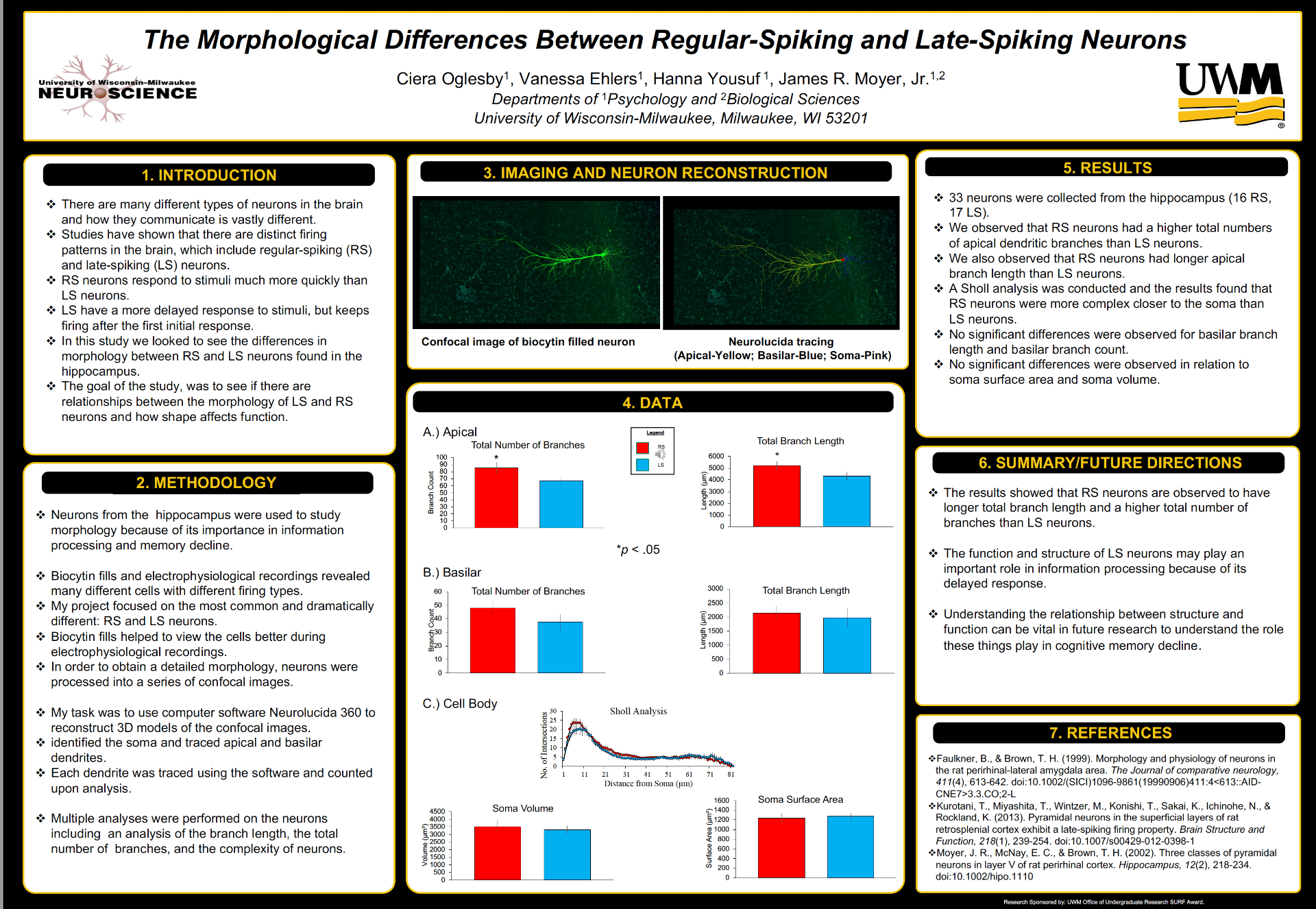Ciera Oglesby, “Morphological Analyses of Regular-Spiking and Late-Spiking Neurons in Hippocampus”
Mentor: James Moyer, Psychology
The hippocampus is a brain structure that plays an important role in information processing and long-term memory formation. It can be further divided into two separate regions: the dorsal hippocampus and the ventral hippocampus. Neurons within the hippocampus consist of different firing types which include regular spiking (RS), late spiking (LS), fast spiking (FS) and burst spiking (BS). RS and LS neurons are different in the way they respond to inputs. RS neurons will respond to inputs in a much quicker manner than LS neurons. LS neurons have a more delayed response to inputs, which is likely due to the presence of an underlying potassium current. However, morphological differences may also influence the late response of LS neurons. The present study is designed to investigate the differences in morphology between RS and LS neurons and observe if there are differences unique to the dorsal or ventral hippocampus. This is accomplished by obtaining biocytin-filled neurons from patch-clamp electrophysiological recordings, and imaging these neurons using confocal microscopy. Finally, these neurons are then reconstructed 3-dimentionally using Neurolucida. The goal of this study is to examine the relationship between morphology and physiology in hippocampal neurons to better understand the role of the hippocampus in information processing. Initial results suggest that there are distinct morphological differences between RS and LS neurons, including altered dendritic branching and complexity. Specifically, the total number of apical dendrite branches for RS neurons in the ventral and dorsal hippocampus are greater than LS neurons. Sholl analysis reveals that RS neurons are more complex closer to the cell body that LS neurons. These initial findings suggest that the difference in dendritic complexity of RS and LS neurons may contribute to differences in firing properties in not only the hippocampus but possibly in other brain regions where these neurons types are found.

Very detailed and useful information, with a solid foundation in science and with many implications for future research